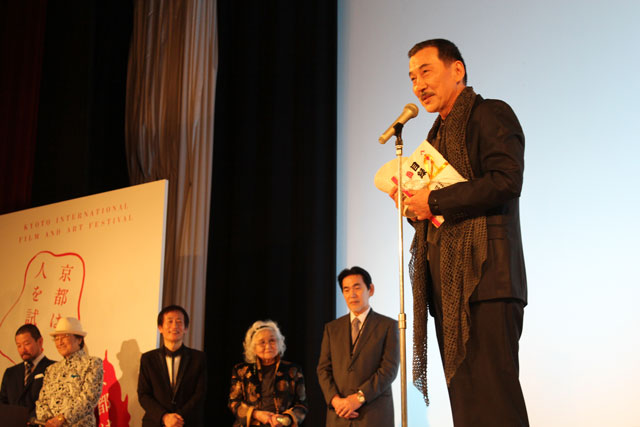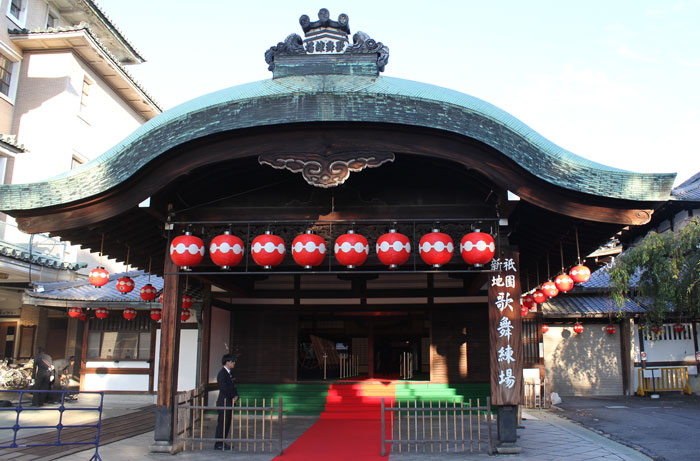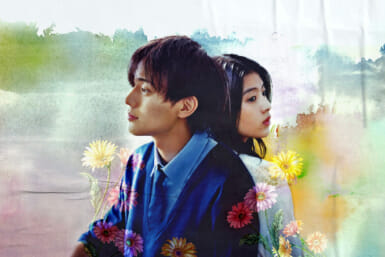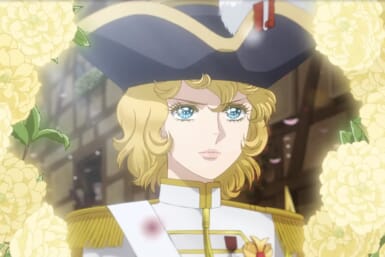On Sunday evening The Kyoto International Film and Art Festival ended as it began just four days earlier, with veteran film director and chairman of the festival’s Executive Committee Sadao Nakajima bellowing a variation on the words he used to start cameras rolling on his films, “Kyoto Film Festival. Ready. START!” The diminutive old filmmaker was referring to the promise of returning next year, building on these newly established foundations to bring a bigger and better festival to the historic city.
Text and pictures by Christopher O’Keeffe
The Kyoto International Film Festival has been operating since 1997 though its principal award, the Shozo Makino Award (named after the filmmaker and “father” of cinema in Japan), has been around since 1958. This year Yoshimoto Kogyo, entertainment conglomerate and home to many of Japan’s biggest comedians and TV talent, has come on aboard to shake up the event and bring it to a much wider audience. The newly christened Kyoto International Film and Art Festival is not so much trying to challenge other major film festivals for content—Tokyo International kicks off less than a week after Kyoto closes its doors. Instead it offers a diverse lineup exploring the film heritage of this great city with a few nods to works from the wider world.
Yoshimoto Kogyo also run the Okinawa International Movie Festival but in reflecting the very different characters of the two locations, Kyoto was a very different affair than the celebration of movies, comedy, entertainment and fun in the sun that is held each year in March. Amidst the temples and shrines of this cultural capital Nakajima, a veteran film director with over 60 credits to his name, spoke often of the city’s role as the birthplace of cinema in Japan and spiritual home of the jidai-geki (samurai drama). The festival’s lineup of films reflected its intent on honoring the past with screenings of works dating back to the silent era of cinema and leading right up until the present day, taking in features from icons Toshiro Mifune, Yuya Uchida and 60s monster movie spectacular Daimajin along the way. For all the good intentions, and despite frequent declarations of an aim to open Japanese cinema to the world, criminally none of these classic features were shown with English subtitles, a mistake which needs to be rectified at next year’s event. While the new features were arguably less interesting than the classic material on offer they were at least accompanied by subs.
Offering much more than just films the city also opened its doors to a variety of art installations and displays, many of which were showcased in the former Rissei Elementary School building where a number of participation workshops allowed visitors to have a go at some of Kyoto’s traditional crafts for themselves. Art and culture permeated throughout the festivities with installations including Satoru Tamura’s Love Machine taking residence at the Kyoto station building, performances at City Hall Square and a screening of video artist Chie Matsui’s Purusha at The Museum of Kyoto.
After four days of film and art the festival wrapped up in the Yoshimoto Gion Kagetsu theatre on the footsteps of Yasaka Shrine. Leading the ceremony was festival executive director Kazuyoshi Okuyama. An established producer and the man behind Beat Takeshi’s early yakuza work amongst others, Okuyama has been leading Yoshimoto Kogyo’s Creators Factory in recent years with the aim of discovering and supporting new talent in filmmaking. Joining the accomplished producer on stage were Teruyo Nogami, former script supervisor and production assistant to legendary director Akira Kurosawa, and Shiro Mifune, son of legendary actor and Kurosawa leading man Toshiro Mifune. With the newly established Toshiro Mifune Award named in his father’s honor, Shiro was on hand to present the prize to actor Koji Yakusho. A familiar face in Japanese film, Yakusho is recognizable to foreign audiences for his work in Memoirs of a Geisha and Babel; he received the award for having the ability to achieve international success and reach the heights of fame its namesake achieved. Other winners included Hollywood legend Clint Eastwood for the Most Respect Award and, because Kyoto is the sister city of Paris, art-house darling Irene Jacob for the Most Respect in Paris Award. Films from both actors were shown throughout the festival.
Yoshimoto Kogyo do an outstanding job in Okinawa, creating a hugely entertaining event that draws in the people of the islands and often surprises with its guests and lineup. Kyoto, in its first year has not yet reached this level but under the leadership of the ambitious Okuyama and with a few minor improvements this could become a major yearly event celebrating Japan’s exceptional film history while pushing it into the future with its commitment to new filmmaking talent. For now the real star of Kyoto International Film and Art Festival is the beautiful city of Kyoto itself.
Main Image: Koji Yakusho delivers his acceptance speech for the first inaugural Toshiro Mifune Award










